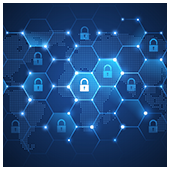An issue has recently been identified with Android devices that may put users at risk of being exposed to a massive data security breach. A backdoor in Android devices and operating software makes it possible for personal data to be transmitted and viewed by people in China. So what created this vulnerability? Android devices are […]
 An issue has recently been identified with Android devices that may put users at risk of being exposed to a massive data security breach. A backdoor in Android devices and operating software makes it possible for personal data to be transmitted and viewed by people in China. So what created this vulnerability?
An issue has recently been identified with Android devices that may put users at risk of being exposed to a massive data security breach. A backdoor in Android devices and operating software makes it possible for personal data to be transmitted and viewed by people in China. So what created this vulnerability?
Android devices are made with various software and firmware from a variety of companies. One company that creates firmware and software for numerous companies around the world is known as Adups, a Chinese company based in Shanghai. One of the features of the offerings is that the firmware or software automatically sends data back to Adups every 72 hours. The data sent includes information like contact lists, phone call lists, and text messages.
A company known as Kryptowire, a security firm that specializes in detecting potential risks and breaches, found that the firmware developed by Adups may have been installed on a wide array of Android devices, unbeknownst to consumers that purchased the products. Adups, for its part, claims that the software was developed for a specific client that needed to track such information to determine customer service and satisfaction.
Even if the software was designed only for one specific client, Kryptowire found it on the product of at least one other Adups client and has concerns that other companies and devices that work with Adups may also be affected. The leaking of data to Adups or other companies and persons in China (or anywhere in the world) represents a huge security risk for both business and individual Android product users. The backdoor access to the device does not just let data get transmitted to Adups but makes it possible for someone to access and take control of the device without the Android device owner knowing or allowing the access.
As of yet, Google is attempting to catch up with Kryptowire's findings and the known affected clients to try to close this backdoor access and keep user data as safe and secure as possible. Contact us for further information or to find out whether your device is one of those known to be affected by this significant and worrisome data breach.

 As long as businesses host valuable data, cyber criminals will continue to bypass the security protocols meant to protect this data. The causes of security breaches range from device theft or loss, weak and stolen credentials, malware, and outdated systems that use ineffective security measures. And with these five tips, you can take the first step toward making sure a security breach never strikes at your precious business data.
As long as businesses host valuable data, cyber criminals will continue to bypass the security protocols meant to protect this data. The causes of security breaches range from device theft or loss, weak and stolen credentials, malware, and outdated systems that use ineffective security measures. And with these five tips, you can take the first step toward making sure a security breach never strikes at your precious business data.
 The new features recently unveiled by Office 365 promise to bring business owners to a more secure and knowledgeable position in which to make important decisions regarding the future of their corporation. Microsoft expanded the popular program's basic scope to include data protection and productivity tools, including the replacement of Delve Analytics with the MyAnalytics add-on. Let's take a look at the three features Microsoft added to Office 365 and the implications of these new additions.
The new features recently unveiled by Office 365 promise to bring business owners to a more secure and knowledgeable position in which to make important decisions regarding the future of their corporation. Microsoft expanded the popular program's basic scope to include data protection and productivity tools, including the replacement of Delve Analytics with the MyAnalytics add-on. Let's take a look at the three features Microsoft added to Office 365 and the implications of these new additions. As long as there have been salesmen, there have been scammers trying to sell useless products. Traditionally the elderly have fallen prey to cold-call fraud, but now scam artists are getting tech-smart, and it's the younger generation of computer users who are falling for scams. Let's find out just what's going on with this new trend, and why the tech-savvy are more vulnerable to it.
As long as there have been salesmen, there have been scammers trying to sell useless products. Traditionally the elderly have fallen prey to cold-call fraud, but now scam artists are getting tech-smart, and it's the younger generation of computer users who are falling for scams. Let's find out just what's going on with this new trend, and why the tech-savvy are more vulnerable to it.